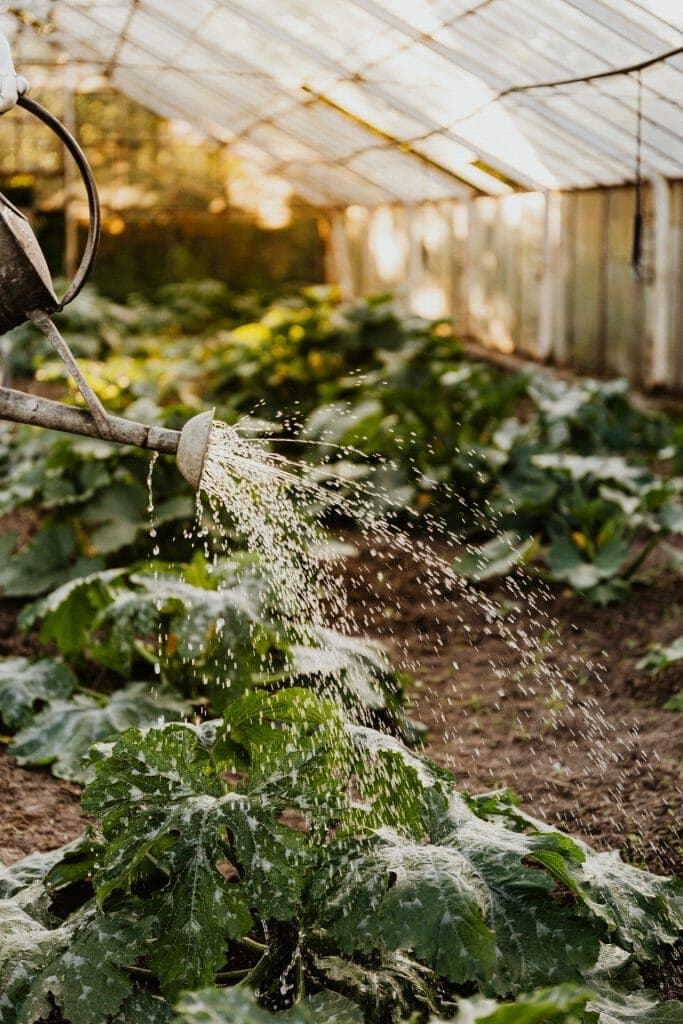Written by Dr Gareth Evans and published on http://www.greenhousegrowing.co.uk/.
Greenhouses can become extremely hot on hot, sunny days in summer. While greenhouse crops like tomatoes, cucumbers, aubergines and melons thrive in heat, too much can put them under stress and cause tissue damage. Temperatures over 27°C can begin to cause damage – you might spot wilting, leaf scorch or dessicated young foliage. Very high temperatures can also cause poor pollination and damage to developing fruits.
There are three things that you need to do in the height of summer to keep your greenhouse cool: provide adequate ventilation, give shade from direct sunlight and damping down. It’s also important to keep plants well watered.
Watering and Damping Down
Everyone knows that water is essential for the well being of any plant but in the confines of the greenhouse, the grower has to assume full responsibility for making sure that this need is properly met. It is a staggering thought that at least as many plants are killed by over-watering as under – especially during the winter months – so it is clearly vital to get this important aspect of greenhouse management right.
When to Water
Water requirements vary with different types of plants, their stage of development and the time of the year. Cyclamens and gardenias, for instance, grow best when their compost is kept moist – demanding frequent watering – while geraniums prefer drier conditions. As a general guide, mature plants need more water than young ones, larger plants more than smaller ones and all plants in the warm greenhouse need more watering than those grown in cool or unheated conditions.
In the summer – and especially during hot, sunny spells – the grower needs to be particularly vigilant, since potted plants can dry out surprisingly quickly in the high temperatures of the greenhouse. By contrast, during the winter, over-watering can quickly lead to an excessively damp environment which itself can cause all manner of problems for plants – including the proliferation of a variety of fungal diseases, including botrytis. Spring and autumn watering lies somewhere between these two extremes.
Judging when to water is an important thing to master – calling for the combination of an acquired “knack” of assessing how wet the compost really is, with an understanding of the needs of a particular plant. In the days of clay pots, the old gardeners would tap the sides and know from the sound how much moisture the compost held; with the advent of plastic pots, the easiest way is to pick them up and judge by the weight. It is a skill, like any other, which takes time to develop, but one well worth the effort since it will serve any grower well in the long term.
The cool of the evening is usually the best time to be watering. Knowing how much to water is also a bit of an art in itself. Perhaps the simplest approach is to adopt the time-honoured technique of filling each pot up to the rim – gently, to avoid disturbing the roots – and letting it soak down into the compost. One good drenching when required, instead of a daily “topping up”, makes sure that compost is thoroughly wetted around all of the roots rather than just the upper portions of the pot.
Watering Equipment
Although a good watering-can is always an essential piece of equipment, for larger greenhouses, especially if they are heavily stocked, some form of irrigation system is certainly worth considering. Manually watering on a big scale – however much you like your plants – can soon become a bit of a chore.
Damping Down
Damping down refers to wetting the floor and staging to increase humidity within the greenhouse, particularly when weather is hot and dry. This is partly because some degree of moisture is needed in the atmosphere – though the amount once again varies between different types of plants – and partly to control the likes of red spider mite and powdery mildew which both prefer dry conditions to thrive. With the obvious exception of cacti and succulents, most greenhouse plants will benefit from damping down during the heat of the summer, while it is beneficial to true hot-house plants all-year-round. The easiest method simply involves taking a fine-rosed watering-can to the staging, floor and foliage.
It is often said that while damping down cannot be overdone in the summer, it does require considerable caution in the winter if it is not to end up doing more harm than good. In the summer, it might be appropriate to damp down early in the morning, around mid-day and then again in the evening, as you close the greenhouse down for the night. In late spring and first part of the summer, damping down is probably best left until the end of the afternoon or early evening. It is a good idea to close the ventilators down at the end of the day prior to damping down since the combination of warmth and moisture levels combine to produce ideal growing conditions.
Managing the water requirements of greenhouse plants is certainly not without its difficulties and almost always needs a bit of a fine tuning to get it right, however rigorously you follow the “rules” in all the gardening books. The trick to getting watering right is to know the sort of conditions the plants you are growing need, do your best to match them – and then keep a careful eye out to see how well you are doing. With a little practice, the necessary “feel” for the job should soon develop and you – and your plants – will feel the benefit.
Original post here http://www.greenhousegrowing.co.uk/wateringdampingdown.html.



